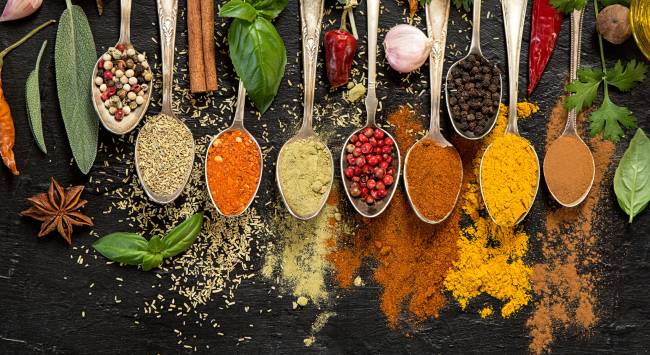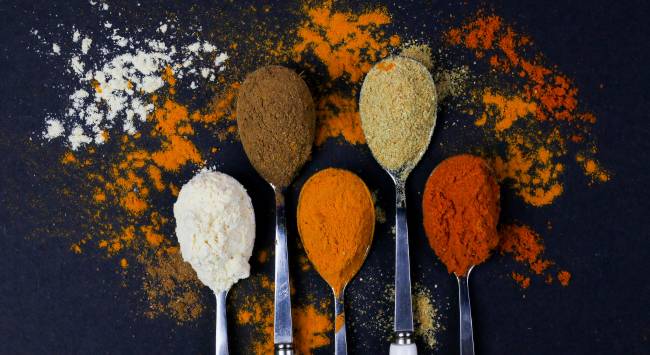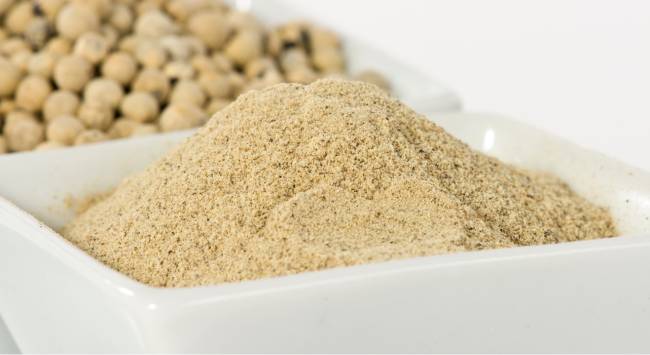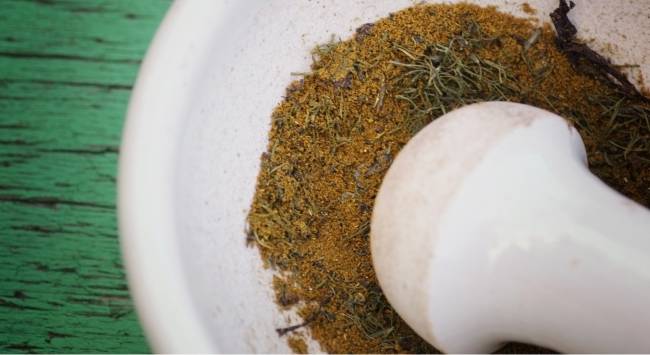
A Sneak Peak into the Spices Manufacturing Process

Spices have been a cornerstone of global cuisine for centuries, adding not just incredible flavors, but also possessing medicinal and preservative qualities. However, few people truly understand the fascinating process behind how these aromatic wonders are produced.
In this article, we’ll take you on a journey through the complex world of spices manufacturing – from sourcing raw materials to final packaging – revealing the machinery and techniques used along the way.
Key Takeaways
- Spices manufacturing involves multiple steps, including sourcing and procuring raw materials, cleaning and drying spices, grinding and milling to produce a consistent texture, mixing and blending different spices together in accurate proportions, packaging and labeling for distribution purposes, as well as proper storage to maintain quality.
- To ensure safe consumption of spices requires effective measures against microbial and allergen contamination throughout the entire production process from sourcing to packaging. Food labeling regulations must be strictly followed for proper indication of potential allergens in spice blends.
- Maintaining the consistent flavor, aroma, and color of spices is crucial in the manufacturing process. It’s achieved through strict guidelines controlling several variables such as temperature, humidity levels while blending different spices while maintaining their individual characteristics.
Key Steps In The Spices Manufacturing Process And Machinery Used

The spices manufacturing process involves several key steps, including sourcing and procuring raw materials, cleaning and drying the spices using specific equipment, grinding and milling to produce a consistent texture, mixing and blending different spices together in accurate proportions, packaging and labeling for distribution purposes, as well as proper storage to maintain quality.
Sourcing And Procuring Raw Materials
Sourcing high-quality raw materials is the first and most crucial step in the spices manufacturing process. As a food consumer, it’s essential to understand that your favorite spices start their journey from various parts of the world where they are cultivated under specific conditions tailored to each spice type.
Reputable manufacturers prioritize building strong relationships with local farmers and suppliers to ensure that only the finest quality ingredients make it into their products.
These partnerships not only guarantee access to fresh, flavorful spices but also promote sustainable farming practices, benefiting both people and the environment. Imagine your go-to curry blend – impeccably flavored thanks to carefully selected cumin seeds grown on Indian soil or fiery red paprika obtained from sunbathe Hungarian fields.
Cleaning And Drying
Spices must undergo proper cleaning and drying to remove any dirt, debris, or moisture that may affect their quality. Here are the key steps in cleaning and drying spices during the manufacturing process:
- Sorting: Spices are first sorted by size, shape, and color to ensure uniformity.
- Washing: Spices are washed thoroughly with clean water to eliminate any surface impurities.
- Dehydration: The spices are then dried using different methods like sun-drying or mechanical drying to remove all moisture.
- Filtering: After drying, the spices are filtered through sieves or air classifiers to achieve uniformity in size and texture.
- Quality Control: Before moving forward in the manufacturing process, the spices undergo quality control tests for aroma, flavor, and appearance.
Proper proper drying and cleaning of spices ensures high-quality products that are free from contaminants, retain spice quality, and have a long shelf-life. With proper processes in place, manufacturers can guarantee safe and nutritious spice products for consumers worldwide.
Grinding And Milling
Grinding and milling are crucial steps in the spices manufacturing process that help to produce a consistent product.
The process involves reducing the size of the raw materials to a suitable size for blending and packaging.Industrial grade machines are used to perform this task, which helps to ensure that it’s completed efficiently and accurately much better than domestic spice grinding machines.
Spices can be ground using several methods, including hammer mills, plate mills, and roller mills.Milling may also be used to separate husks from seeds or other debris during processing.
Fine or coarse grinding and milling play an important role in maintaining the flavor, aroma, and color consistency of the final product.
Mixing And Blending
In the spices manufacturing process, mixing and blending are crucial steps that ensure consistent flavor and aroma in the final product. The following are some of the methods used for mixing and blending:
- Batch Blending: This method involves combining measured amounts of different spices in a large container or mixer. The mixture is then blended until it’s a homogenous blend.
- Continuous Blending: A continuous blending system combines two or more spices while they move through the production line continuously.
- Ribbon Blenders: These are commonly used to mix dry powders, where the powders flow down from the top as the ribbon rotates to prevent dead spots.
- Screw Conveyor: In this method, various spices are fed into a hopper on one end of a screw conveyor, which then pushes them toward the other end while blending them along the way.
- V-Blender: A V-shaped container separates and blends ingredients thoroughly by reversing motion intermittently.
These methods ensure that final spice powders are evenly blended, maintaining consistency throughout each batch produced. It’s important to note that particular care should be taken when blending heat-sensitive spices like cinnamon because their essential oils may evaporate if exposed to high heat for too long.
Packaging And Labeling
Packaging and labeling are crucial steps in the spices manufacturing process that ensure that consumers get high-quality products. Good packaging helps preserve the aroma, flavor, and texture of the spices while protecting them from moisture, air, and sunlight. Here are some of the key aspects of packaging and labeling in spice manufacturing:
- Containers: Spices can be packaged in various containers such as glass jars, plastic pouches, or tin cans. The choice of container depends on the type of spice and market demand.
- Labeling: Spice labels should include relevant information about the product such as the name, brand, weight or volume, ingredients list, nutritional information, allergen warnings, and storage instructions.
- Quality control: Packaging facilities must follow standard operating procedures (SOPs) to ensure that each package contains accurate weights or volumes.
- Bulk packing: In industrial settings where large quantities of spices are produced and packed at once – bulk packing is a common practice.
- Automated sealing/machine wrapping: Machines help improve efficiency- by efficiently sealing packages with minimal adulteration of item inside.
- Pouch filling: Another practice for packing spices is through machines capable of filling small sachets with specified weights to accurately weigh each portioned pack.
By understanding these packaging requirements – consumers should be better equipped to identify high-quality spices when making their purchases while manufacturers can reduce wastage due to contamination concerns during transportation/storage along with improved shelf-life ultimately boosting sales revenues over time!
Storage
After the spices have been processed, storage is a crucial step to preserve their quality and freshness. Most spices are stored in dry, cool areas away from direct sunlight.
It’s important to keep them in airtight containers to prevent air exposure that can cause them to lose flavor and aroma over time. Proper labeling of spice containers is also necessary for easy identification.
It’s recommended to buy whole spices instead of pre-ground ones if possible since they stay fresh longer when left unground until use. When storing ground spices, it’s best to do so in smaller quantities than larger amounts since they tend to lose flavor faster once exposed to air.
Overcoming Challenges In Spice Processing And Grinding

To ensure consistent flavor, aroma, and color in spices, manufacturers must overcome challenges such as microbial and allergen contamination control, quality assurance compliance, and maintaining the quality of raw materials.
Maintaining Flavor, Aroma, And Color Consistency
Maintaining the consistent flavor, aroma, and color of spices is crucial in the manufacturing process. This ensures that customers get a high-quality product every time they purchase a specific spice.
To achieve this consistency, spice manufacturers follow strict guidelines that control several variables such as temperature, humidity levels, and storage conditions. For example, black pepper requires a finely tuned drying process to ensure it maintains its pungent and spicy taste once ground into powder form.
Another factor that affects consistency is blending different spices while maintaining their individual characteristics. Spice manufacturers use state-of-the-art mixing equipment designed explicitly for delicate blending operations without compromising the quality of each component’s distinct flavor profile.
Subtle drying techniques, such as infrared, solar dryer drying, combined wood burning, or microwave vacuum drying, are implemented to decrease moisture levels and guarantee product longevity, all while preserving the scent, volatile oils, and color of the substances.
Finally, packaging plays an important role in maintaining spice freshness by controlling light exposure and regulating moisture content inside bags or containers.
Microbial And Allergen Contamination Control
Ensuring the safety and quality of spices require adequate measures to control microbial and allergen contamination during processing. Microbial contamination can occur during harvesting, storage, transportation, or even in the manufacturing plant.
Cross-contamination can also occur between different spices if equipment is not properly cleaned after use.
To prevent microbial contamination, manufacturers employ various methods such as steam treatment, radiation treatment, or fumigation with approved chemicals. Proper cleaning and sanitation practices are crucial in preventing cross-contamination while good manufacturing practices (GMPs) ensure that facilities adhere to standardized protocols for food safety.
In conclusion, ensuring safe consumption of spices requires effective measures against microbial and allergen contamination throughout the entire production process from sourcing to packaging.
Food labeling regulations must be strictly followed for proper indication of potential allergens in spice powders and blends.
Quality Assurance And Regulatory Compliance
One critical aspect of spice manufacturing is quality assurance and regulatory compliance. The spice industry faces strict regulations from government bodies like the FDA, which sets safety standards for spices to prevent contamination by pathogens or allergens.
Therefore, it’s not surprising that spice manufacturers use several techniques such as microbial testing and product analysis to maintain the highest level of quality control over their products.
In conclusion, quality assurance and regulatory compliance are essential components in ensuring consumer safety when it comes to spices production.
Best Practices For Spice And Extract Manufacturing

Implementing standard operating procedures (SOPs) and quality control measures are crucial for ensuring consistent spice quality.
Implementing Standard Operating Procedures (SOPs)
Implementing Standard Operating Procedures (SOPs) is crucial for ensuring consistency and quality in the manufacturing process of spices and extracts. Here are some best practices to follow:
- Establish clear SOPs for each step of the manufacturing process, from raw material selection to packaging and labeling.
- Train employees on the proper procedures outlined in the SOPs to reduce errors and maintain consistency.
- Regularly review and update SOPs as needed to adapt to changes in regulations or industry standards.
- Implement a system for tracking and documenting adherence to the SOPs, such as checklists or digital platforms.
- Conduct internal audits to assess compliance with SOPs and identify areas for improvement.
- Ensure that all equipment used in the manufacturing process is calibrated regularly according to the manufacturer’s recommendations.
- Maintain proper documentation of all materials used in production, including their source, storage conditions, and expiration dates.
By following these best practices for implementing SOPs, spice manufacturers can ensure that their products meet high-quality standards while adhering to regulatory requirements.
Quality Control And Testing
Ensuring the highest quality of spices is essential in the manufacturing process. Quality control measures involve regular checks and tests at different stages of production to ensure that both raw materials and finished products meet specific standards.
Quality control testing includes sensory evaluations, chemical analyses, and microbiological assessments. Sensory evaluations are used to assess aroma, flavor, color, texture, and appearance.
One example is McCormick Spice Company’s rigorous testing methods throughout their production process. They have a dedicated team responsible for ensuring that every product meets strict quality standards before it goes out to consumers.
Adoption Of Sustainable Practices And Technologies
As consumers become more conscious of their environmental impact, the spices industry is also embracing sustainable practices and technologies.
For example, some spice manufacturers have implemented closed-loop systems where wastewater is recycled for use in irrigation or cooling systems. Others have shifted towards using recyclable packaging materials to reduce waste.
By adopting these sustainable practices and technologies, not only does the spices industry reduce its impact on the environment, but it can also attract eco-conscious customers who prioritize ethical sourcing and sustainability when making purchasing decisions.



